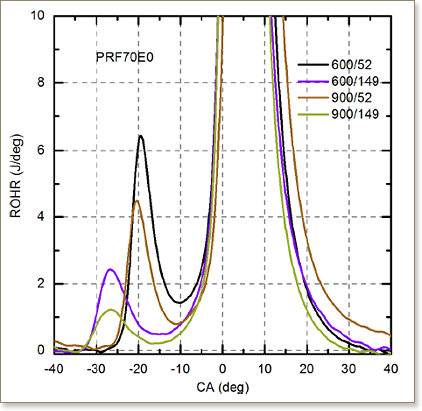Simulating HCCI blending octane number of primary reference fuel with ethanol


The blending of ethanol with primary reference fuel (PRF) mixtures comprising n-heptane and iso-octane is known to exhibit a non-linear octane response; however, the underlying chemistry and intermolecular interactions are poorly understood. Well-designed experiments and numerical simulations are required to understand these blending effects and the chemical kinetic phenomenon responsible for them. To this end, HCCI engine experiments were previously performed at four different conditions of intake temperature and engine speed for various PRF/ethanol mixtures. Transfer functions were developed in the HCCI engine to relate PRF mixture composition to autoignition tendency at various compression ratios. The HCCI blending octane number (BON) was determined for mixtures of 2-20 vol % ethanol with PRF70. In the present work, the experimental conditions were considered to perform zero-dimensional HCCI engine simulations with detailed chemical kinetics for ethanol/PRF blends. The simulations used the actual engine geometry and estimated intake valve closure conditions to replicate the experimentally measured start of combustion (SOC) for various PRF mixtures. The simulated HCCI heat release profiles were shown to reproduce the experimentally observed trends, specifically on the effectiveness of ethanol as a low temperature chemistry inhibitor at various concentrations. Detailed analysis of simulated heat release profiles and the evolution of important radical intermediates (e.g., OH and HO2) were used to show the effect of ethanol blending on controlling reactivity. A strong coupling between the low temperature oxidation reactions of ethanol and those of n-heptane and iso-octane is shown to be responsible for the observed blending effects of ethanol/PRF mixtures.
DOI:10.4271/2017-01-0734

"KAUST shall be a beacon for peace, hope and reconciliation, and shall serve the people of the Kingdom and the world."
King Abdullah bin Abdulaziz Al Saud, 1924 – 2015
Thuwal 23955-6900, Kingdom of Saudi Arabia
© King Abdullah University of Science and Technology. All rights reserved